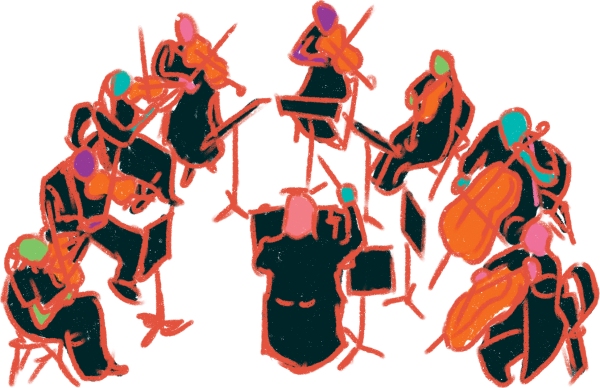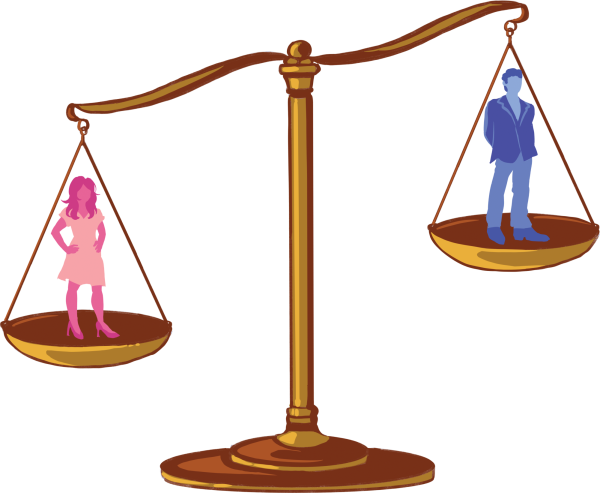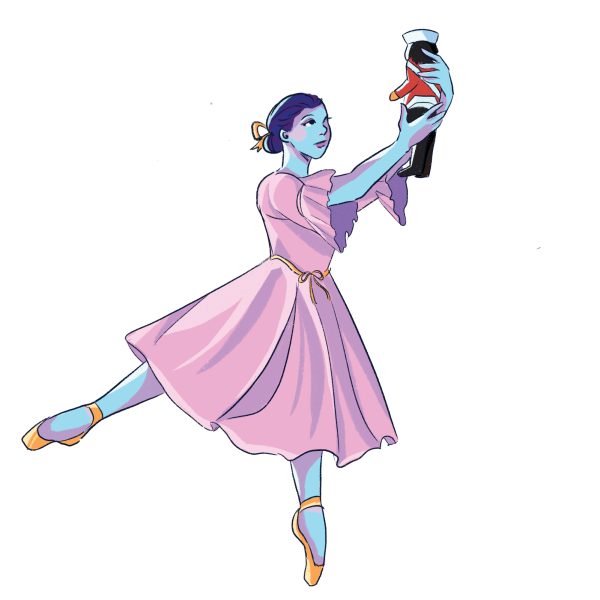BlacKkKlansmen review

graphic by Emmi Lucksinger
October 16, 2018
Spike Lee has directed many award-winning movies such as “She’s Gotta Have It”, “Do The Right Thing” and “Malcolm X”, all of which tackle racial and political issues in the U.S.. Lee’s latest new masterpiece, “BlacKkKlansman” follows the true story of Ron Stallworth, a black police officer in the 1970s, as he goes undercover and infiltrates the Ku Klux Klan (KKK) to gain intel on them.
Stallworth, played by John David Washington, is the first black police officer in Colorado Springs. Spotting an ad for the Klu Klux Klan, he decides to call the number, posing as a proud white supremacist enthusiastic about joining his local chapter of the KKK. Philip “Flip” Zimmerman, played by Adam Driver, a Jewish police officer, joins him in his mission and together, they climb the social ladder in the KKK. Although Stallworth and Zimmerman maintain a friendly relationship throughout the majority of the film, Zimmerman is reluctant to help out a rookie.
I believe their relationship was convincingly executed, and I enjoyed the detail to Stallworth’s connection with Zimmerman as a result of both being minorities targeted by the KKK. When meeting the white supremacists for the first time, Zimmerman is exposed to the KKK’s sadistic, anti-semitic, and anti-black sentiments. He becomes increasingly uncomfortable, and his uncertainty with the entire plan grows as he begins to fear for his safety.
Throughout the movie, the contrasting avenues between the black power and white power movement are clearly emphasized. The Black Student Union (BSU) is portrayed as a powerful, passionate group of people who are adamantly against white people dictating the way their culture should be expressed, and for the liberation of black people. Meanwhile, the white power meetings seem eerily religious as they cheer on the leaders’ abhorrent chants and hateful messaging. One scene is especially jarring as the movie flips back and forth between the BSU and the KKK. The BSU is listening in horror to a story about an innocent black man found guilty of the rape of a white woman and viciously assaulted in the streets, while the KKK is cheering on as they watch “Birth of a Nation,” a film glamorizing the KKK.
“BlacKkKlansman” also depicts Ron’s own internal struggle of not quite fitting in with the police officers because he is black and not quite fitting in with the BSU because he is a cop. Due to many police officers taking advantage of their authority and making arrests based on skin color, hostility between the BSU and police officers was high.
I thoroughly enjoyed “BlacKkKlansman,” which balanced a serious subject with light, humorous scenes. It managed to convey messages about racism and hate groups in Ameri ca, which have recently begun to be blatantly displayed and even normalized by many. The media has played a large role in this normalization of hate crimes around the US with the increased coverage on these crimes, which many people have accepted as a harsh reality of today’s society. “BlacKkKlansman” displays a prominent message about the parts unity, collaboration and courage play when fighting back against hate. Although this movie is based in the ‘70s, it is still extremely relevant in the current political climate and the rise in white supremacist movements.
“BlacKkKlansman” is a poignant comedy which brings to life the hatred and racial conflict in America of the ‘70s and today. Lee weaves a rich, stimulating tale of American history, which entices viewers to watch it time and again to discover new details and uncover complex layers of this piece of cinematic art.








